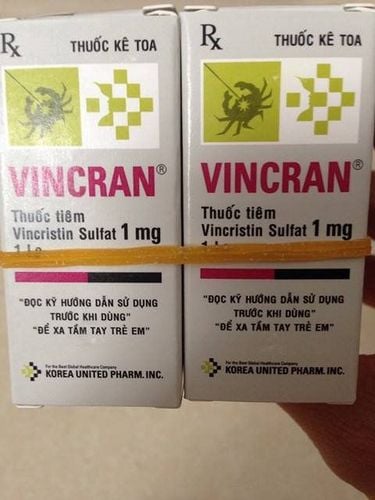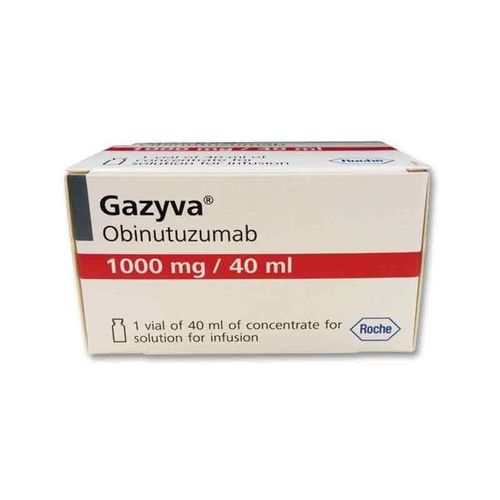This is an automatically translated article.
Post by Master, Doctor Phan Truc - Internal Medicine Oncologist - Hematology - Oncology Center - Radiation Therapy - Vinmec Times City International Hospital
Clinical and subclinical manifestations of acute lymphoblastic leukemia are variable. Sometimes symptoms can be insidious or acute. Therefore, when seeing abnormal signs, patients need to go to medical facilities for examination and treatment.
1. Clinical features of acute lymphoblastic leukemia
1.1. Symptoms The clinical presentation of ALL is highly variable. Symptoms may appear insidious or acute. Symptoms present generally reflect the degree of marrow failure and extent of extramedullary spread. Nearly half of patients present with fever, which may be due to infection in the setting of agranulocytosis or possibly to cytokine release in leukemia (IL-1, IL-6, TNF). secreted from malignant cells. In these patients, the fever resolved spontaneously within 72 hours of initiating leukemia therapy.
Fatigue and lethargy are common manifestations of anemia in patients with ALL. In older patients, mild headache and anemia-related dyspnea are the predominant manifestations. More than 25% of patients, especially children, have a limp due to bone or joint pain, or a reluctance to walk due to malignant cell infiltration into the periosteum, bone, or joint, or from an open medullary cavity enlargement due to malignant cell activity. Children with prominent bone pain often have near-normal blood counts, thus delaying diagnosis. In a small percentage of patients, bone marrow necrosis leads to severe pain, fever, increased sensation, and elevated LDH. Bone and joint pain are usually less severe in adults. Less common manifestations are headache, vomiting, mental changes, oliguria, anuria. Occasionally, patients present with life-threatening infections or bleeding (eg, intracranial hematoma). Intracerebral hemorrhage occurs mainly in patients with a white blood cell count >400G/L. Very rarely, ALL presents with no symptoms and is detected on routine examination.

1.2. Examination Common signs are pallor, petechiae, and ecchymosis in the skin and mucous membranes, signs of bone pain as a result of malignant cell infiltration into the periosteum or hemorrhages that stretch the periosteum. The liver, spleen, and lymph nodes are the most commonly affected extramedullary sites, and the magnitude of the infiltrated organs is more prominent in children than in adults. Anterior mediastinal (thymus) tumors are present in 8-10% of children and 15% of adults. Large anterior mediastinal tumors can compress the great vessels, the trachea, and possibly the superior vena cava. Patients with this syndrome may present with cough, dyspnea, dyspnea when lying down, stridor, cyanosis, dysphagia, facial edema, increased intracranial pressure, and sometimes syncope. A large, painless scrotum may be a sign of testicular infiltration by malignant cells or testicular edema (result of lymphatic occlusion). Both of these conditions can be diagnosed with ultrasound. Other uncommon symptoms include ocular symptoms (malignant cell infiltration of the orbit, optic nerve, retina, cornea, or conjunctiva), subcutaneous nodules (leukemia cutis). , enlargement of the salivary glands (Mikulicz syndrome), cranial nerve palsy and erectile dysfunction (as a result of thrombocytopenic vasculitis or involvement of the sacral nerve). Epidural cord compression at the time of diagnosis is a rare but serious symptom that requires immediate treatment to prevent permanent paraplegia. In some children, tongue infiltrates, nasopharyngeal warts, appendix or mesenteric lymph nodes lead to surgical intervention, before leukemia is diagnosed.
2. Subclinical manifestations of acute lymphoblastic leukemia
Anemia, granulocytopenia, and thrombocytopenia are common in newly diagnosed ALL patients. Severity reflects the extent to which the marrow is replaced by malignant lymphoblasts. The white blood cell count ranges from 0.1 to 1500 G/L (mean: 10-12 G/L). Acute leukocytosis (>100G/L) occurs in 11-13% of white children, but up to 23% of black children and 16% of adults and is often T-ALL. Severe granulocytopenia (<0.5G/L) occurs in 20-40% of patients, increasing the risk of infection. Nearly 90% of patients have circulating malignant blasts at the time of diagnosis. Reactive eosinophilia is a common finding many months before the diagnosis of ALL. Some patients with ALL, mostly male, have t(5;14)(q31;q32) abnormalities and eosinophilia (pulmonary infiltrates, enlarged heart, and congestive heart failure). Such patients usually do not have circulating malignant blasts or other hematopoietic lineages and have a low rate of blasts in the marrow. Activation of the IL-3 gene on chromosome 5 by the enhancer element of the immunoglobulin heavy-chain gene on chromosome 14 is thought to predispose to leukocyte proliferation and is associated with eosinophilia in these cases. In anemic patients, the hemoglobin level was lower than in the pediatric group. Occasionally, a child with ALL has an Hb level < 1g/dL.
Thrombocytopenia was common at the time of diagnosis (mean 48-52G/L). Major bleeding is uncommon, even when platelets are <20 G/L, provided that infection and fever are not present. Some patients (mostly men) present with symptomatic thrombocythemia (>400G/L). A 3-line decrease in hematopoiesis, followed by a period of marrow self-healing, may precede the diagnosis of ALL in rare cases. Coagulopathy is usually mild, may present in 3 to 5% of patients, most often with T-ALL, and rarely bleeds clinically. LDH levels are elevated in most patients with ALL, reflecting tumor load. Hyperuricemia is common in patients with high tumor load ALL, reflecting a high rate of purine degradation. Leukemic cell infiltration into the kidney can cause elevated levels of creatinine, BUN, uric acid, and phosphorus. Rarely, patients have hypercalcemia due to secretion of PTH-like protein (parathyroid hormone) from lymphoblasts and bone infiltration. The E2A-HLF gene combination from transposition t(17;19)(q22;p13.3) found in 0.5% of B-ALLs is common in adolescents, diffuse coagulopathy, hypercalcemia and the prognosis is dire. Impaired liver function as a result of infiltration occurs in 10-20% of patients and is usually mild. However, identification of HBV carriers is important, as it will promote the use of lamivudine therapy, which can prevent viral reactivation during immunosuppressive therapy.
Chest X-ray needed to determine thymus or mediastinal lymphadenopathy and pleural effusion. Although bone abnormalities (bone resorption, bone resorption, osteoporosis, etc.) are seen in 50% of patients, especially in children with low leukocyte levels at diagnosis, bone radiographs are not needed for control. MRI is necessary for patients with suspected vertebral collapse or involvement of the meninges or nerve roots.
Examination of cerebrospinal fluid is an essential diagnostic procedure; approximately one-third of children and 5% of adults have leukemia blasts in the CSF at the time of diagnosis, most of which are asymptomatic. Empirical, CNS infiltrative leukemia is defined as having at least 5 leukocytes/μL (with the appearance of blast cells) or cranial nerve palsy. However, because of the omission of prophylactic cranial radiotherapy in many regimens, the presence of any blast cells in the cerebrospinal fluid is associated with a high risk of CNS recurrence and is indicative of indicated for enhanced intramedullary chemotherapy. Opinions exist about the timing of the first lumbar puncture. Most regimens are required at the time of diagnosis and at the first injection of intramedullary chemotherapy. Leakage of leukemia cells into CSF due to CSF injury is associated with poor outcomes for ALL in children. This risk can be reduced by pre-procedural platelet transfusions in patients with thrombocytopenia, and performed by experienced personnel.
Please dial HOTLINE for more information or register for an appointment HERE. Download MyVinmec app to make appointments faster and to manage your bookings easily.














